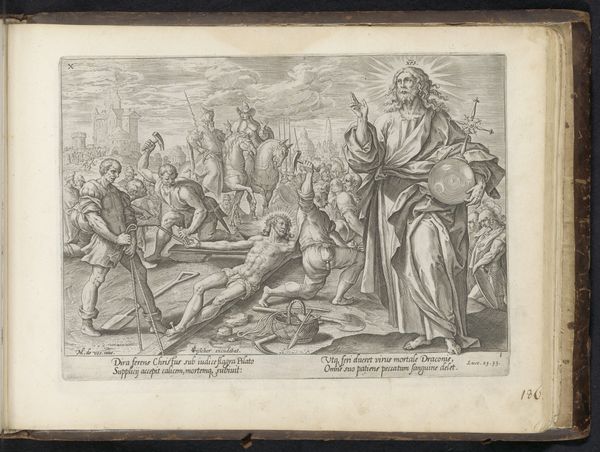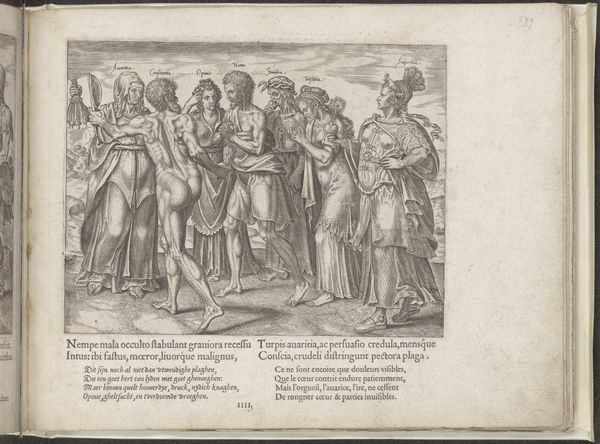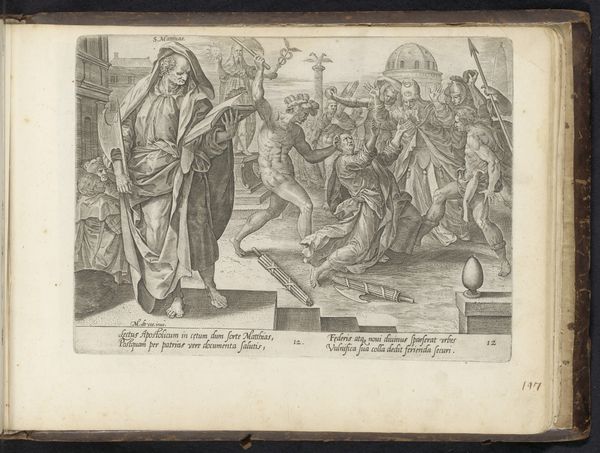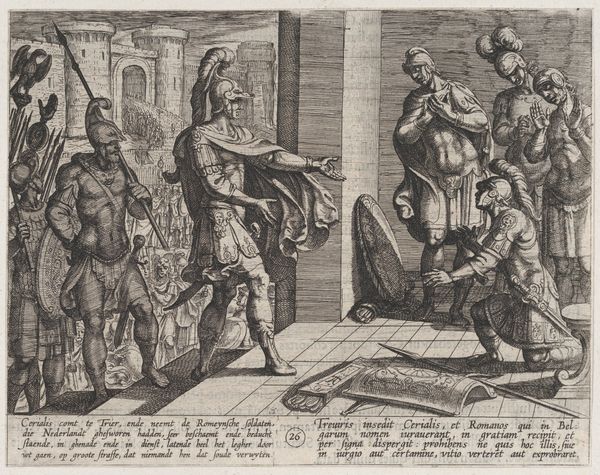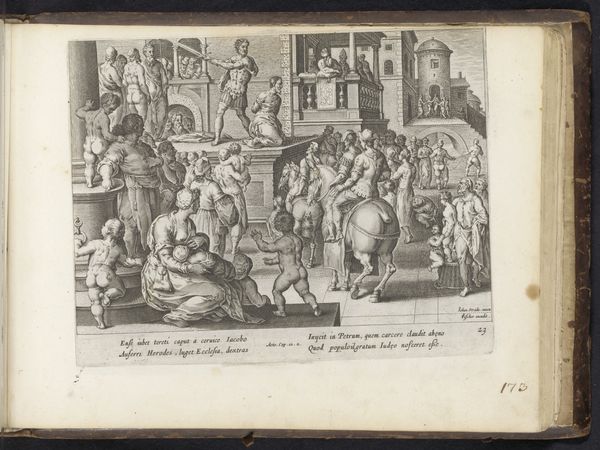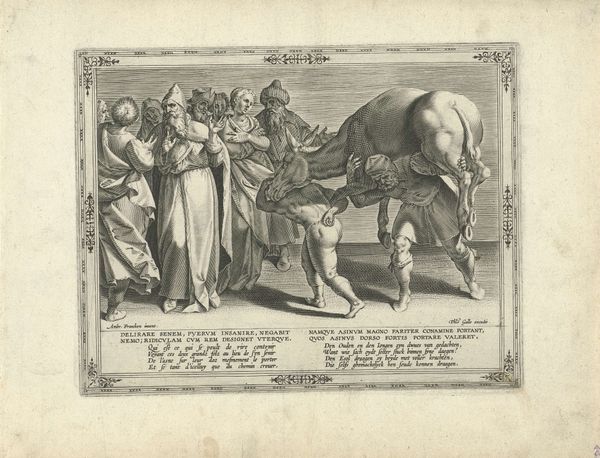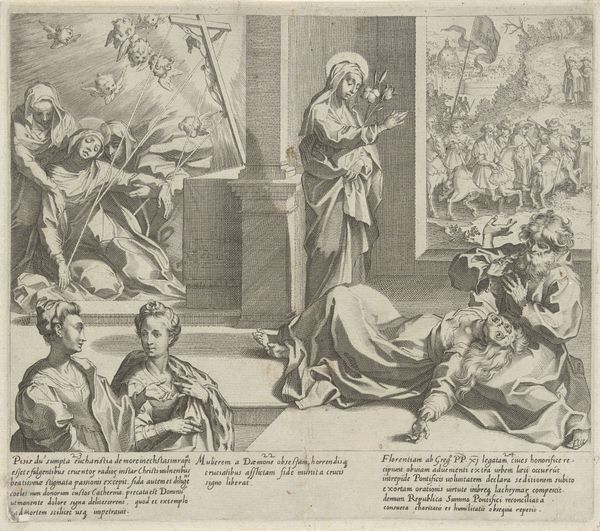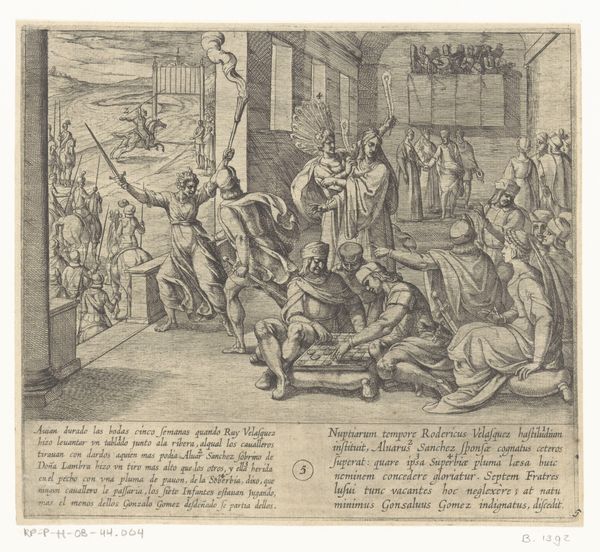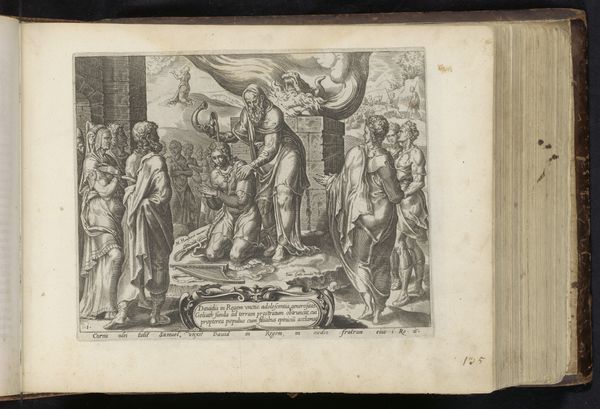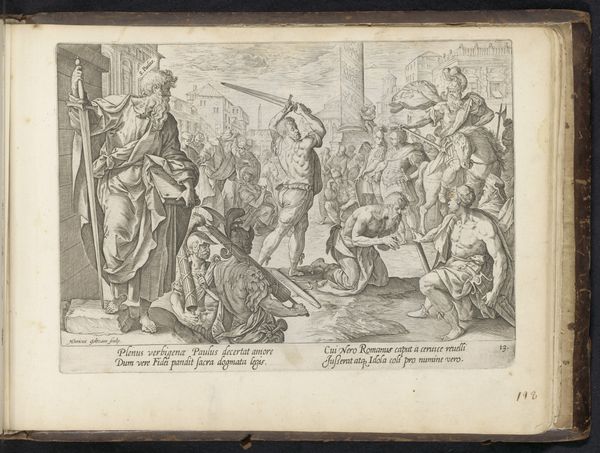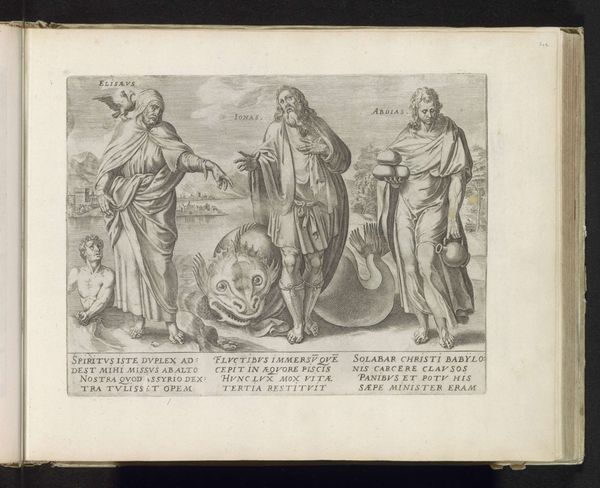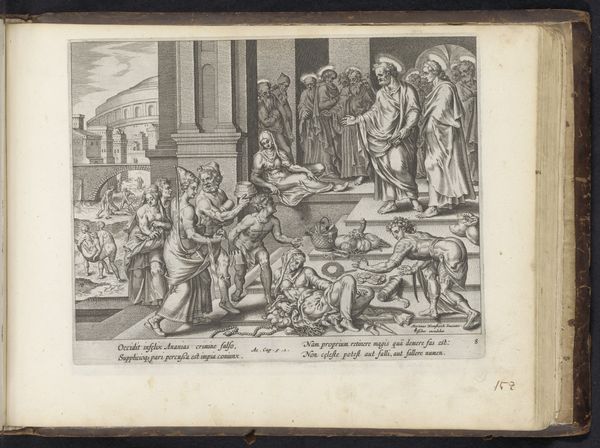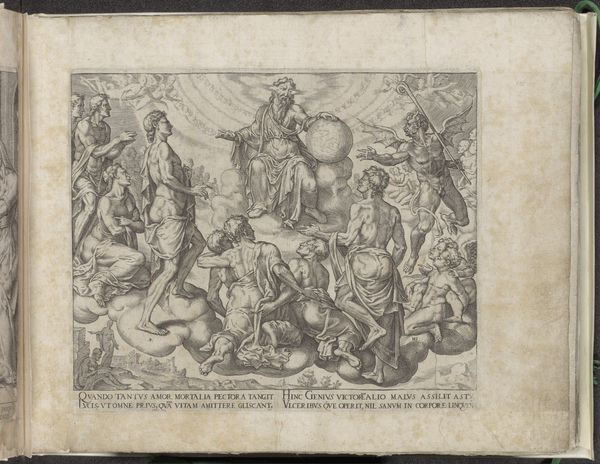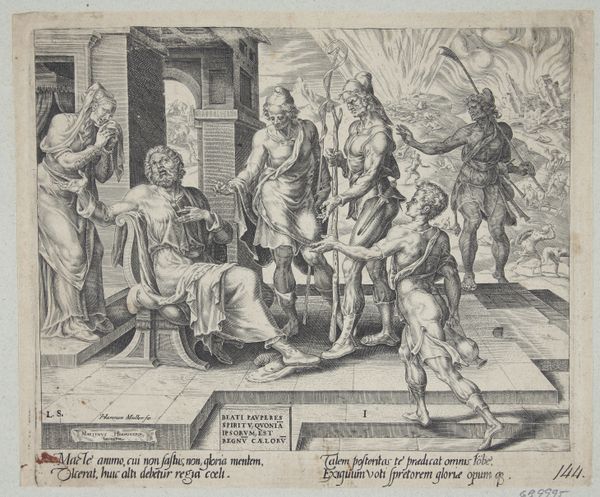
Spotprent op de hebzucht en de rijkdom van de katholieke geestelijkheid 1688 - 1692
0:00
0:00
jacobgole
Rijksmuseum
print, engraving
#
narrative-art
#
baroque
# print
#
figuration
#
history-painting
#
engraving
Dimensions: height 218 mm, width 320 mm
Copyright: Rijks Museum: Open Domain
Editor: So, this is "Spotprent op de hebzucht en de rijkdom van de katholieke geestelijkheid" by Jacob Gole, created sometime between 1688 and 1692. It's an engraving, currently held at the Rijksmuseum. My initial impression is that the figures seem crammed together, but the Christ figure is really striking against the crowd. What do you see in this piece, especially regarding its symbolic elements? Curator: Immediately, I'm drawn to the deliberate contrast. The emaciated figure of Christ, centered and haloed, becomes a powerful symbol of spiritual deprivation juxtaposed against the figures on either side. Look closely at what surrounds Him. On one side, figures eagerly collect something in barrels— earthly riches. And on the other, religious figures enacting physical torments. This division highlights a struggle. Can you guess at the nature of this struggle, thinking about what those particular images evoke in you? Editor: I see the obvious criticism of greed on one side, but I'm not sure how the torturers fit in? Curator: The presence of these violent acts connects greed with spiritual violence. It's as if to say, unchecked wealth justifies these cruel practices in the name of power. They reinforce a system which does not recognize faith in God. This imagery plays on anxieties about corruption within religious institutions, accusations common during the Reformation. Notice the cherubs seemingly assisting with the punishments, as if corrupted themselves. Where have you encountered these similar motifs throughout the study of religious conflicts? Editor: I’ve seen similar propaganda in other prints from the Reformation, although usually focused on one specific event. This print condenses so much. It makes me wonder about the personal impact this had on Jacob Gole and what events prompted its making. Curator: Precisely! The print resonates deeply because it distills larger conflicts down to their potent symbols. These artists shaped narratives and helped to define communities and their beliefs through accessible, relatable imagery. Editor: I understand how Gole’s visuals create this commentary by connecting wealth, greed, torture and damaged divinity now. Thank you.
Comments
No comments
Be the first to comment and join the conversation on the ultimate creative platform.
